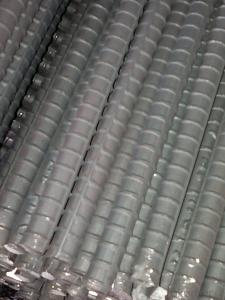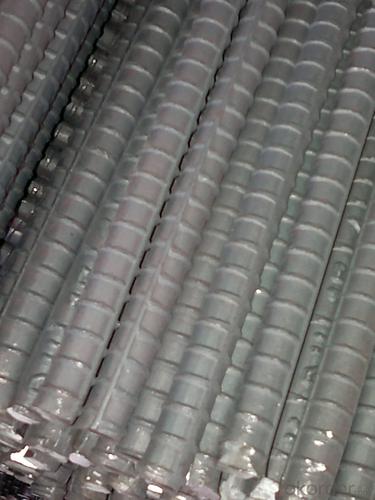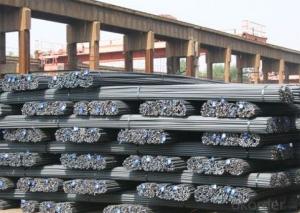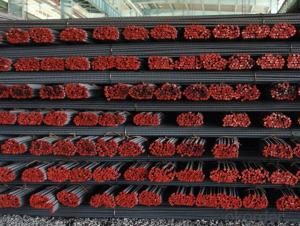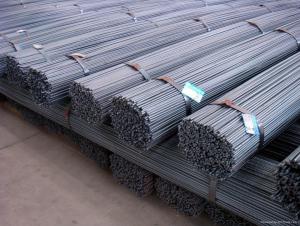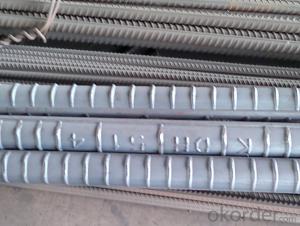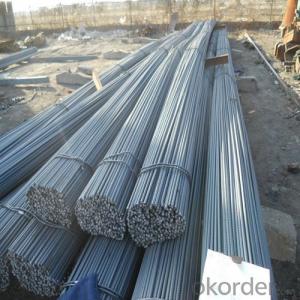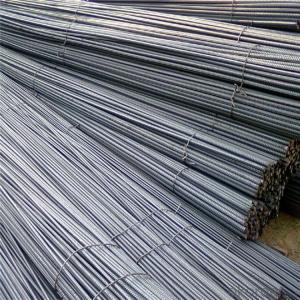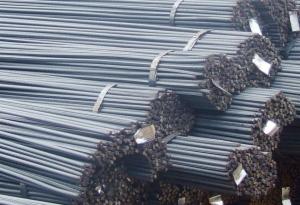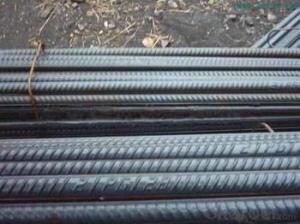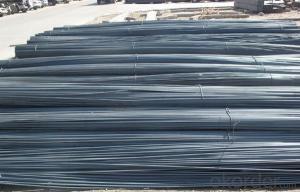Hot-Rolled Steel Deformed Bar Rebar Deformed Steel Bar
- Loading Port:
- Tianjin
- Payment Terms:
- TT OR LC
- Min Order Qty:
- 50 m.t.
- Supply Capability:
- 30000 m.t./month
OKorder Service Pledge
OKorder Financial Service
You Might Also Like
Product Description:
OKorder is offering Hot-Rolled Steel Deformed Bar Rebar Deformed Steel Bar at great prices with worldwide shipping. Our supplier is a world-class manufacturer of steel, with our products utilized the world over. OKorder annually supplies products to European, North American and Asian markets. We provide quotations within 24 hours of receiving an inquiry and guarantee competitive prices.
Product Applications:
Hot-Rolled Steel Deformed Bar Rebar Deformed Steel Bar are ideal for structural applications and are widely used in the construction of buildings and bridges, and the manufacturing, petrochemical, and transportation industries.
Product Advantages:
OKorder's Hot-Rolled Steel Deformed Bar Rebar Deformed Steel Bar
are durable, strong, and resist corrosion.
Main Product Features:
· Premium quality
· Prompt delivery & seaworthy packing (30 days after receiving deposit)
· Corrosion resistance
· Can be recycled and reused
· Mill test certification
· Professional Service
· Competitive pricing
Product Specifications:
deformed steel bar grade 40
material: HRB400, BS4449 GR460B
size: 8-36mmx12m.
short delivery time with bulk or container
packing: Mill standard export packing in bundles/coil, around 2tons/bundle.
country of Origin: China
delivery Time: Within a 35 days
Shipment: by bulk vessel or by container
Leading goods:
section steel:angles,channels,I-beam,H-beam;
coils:cold/hot rolled coils,PPGI,galvanized coils,plate,checkered plate,cutting steel plate,steel strip;
wire rod:steel wire,deformed wire,bar;
pipe:seamless pipe,rectangular pipe,welded pipe,spiral welded pipe,pipe fittings;
stainless steel:steel sheets,stainless steel strips,stainless bar,stainless tube;
special:weathering steel,shipbuilding steel;
construction steel:C-channel,Z-channel,T-bar,high-speed divider plate,corrugated steel plate,steel grating.
Advantage:
We are the spot supplier, Six huge warehouses which can hold 20,000 MT goods.
It makes the cost lower than others,we can provide the competitive price for you.
Delivery time:
Normal sizes can be provided in 7days, the others should be ready in 30---45 days.
Further treatment:
We can offer cutting,painting,drilling holes,bending,threading, welding,galvanization,packing etc.
Security interest:
We have already passed the ISO9001, BV and SGS authentication which makes the quality secured.
If you have the interest in any of the products we can provided, pls don't hesitate to connect with me. Looking forward to cooperate with you.
FAQ:
Q1: Why buy Materials & Equipment from OKorder.com?
A1: All products offered byOKorder.com are carefully selected from China's most reliable manufacturing enterprises. Through its ISO certifications, OKorder.com adheres to the highest standards and a commitment to supply chain safety and customer satisfaction.
Q2: How do we guarantee the quality of our products?
A2: We have established an advanced quality management system which conducts strict quality tests at every step, from raw materials to the final product. At the same time, we provide extensive follow-up service assurances as required.
Q3: How soon can we receive the product after purchase?
A3: Within three days of placing an order, we will begin production. The specific shipping date is dependent upon international and government factors, but is typically 7 to 10 workdays.
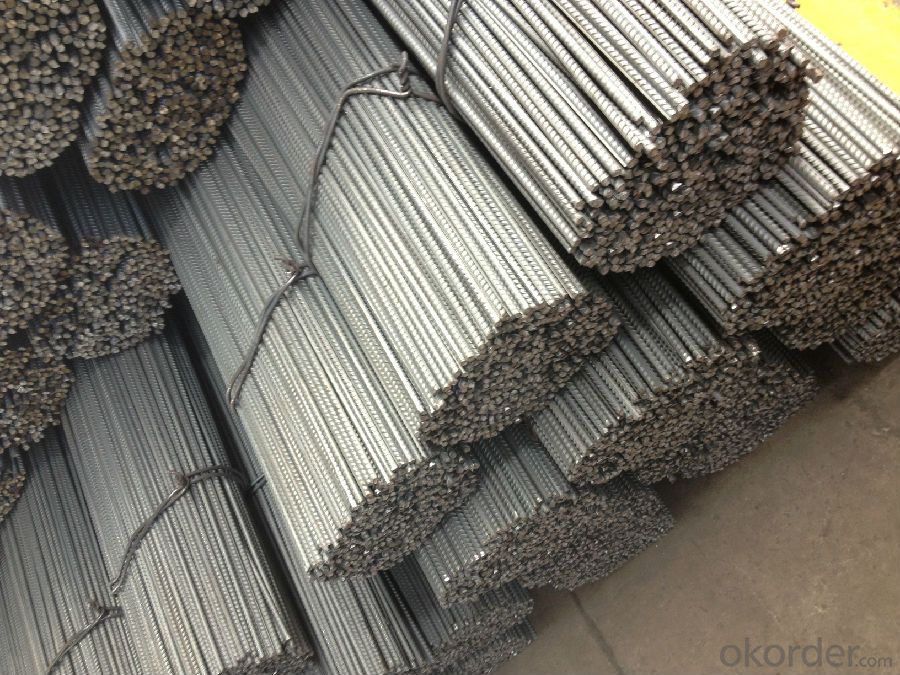
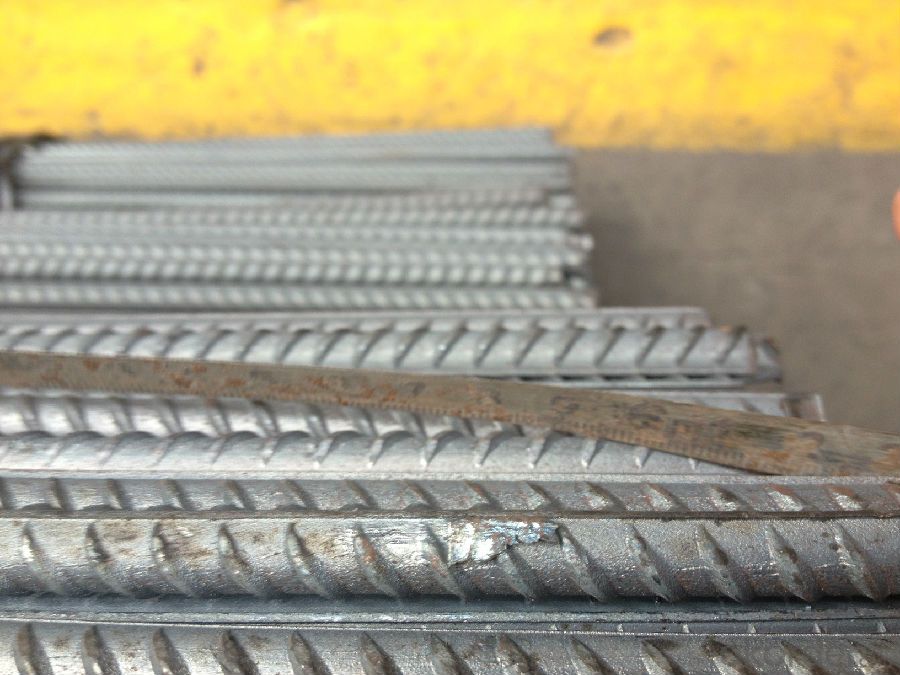
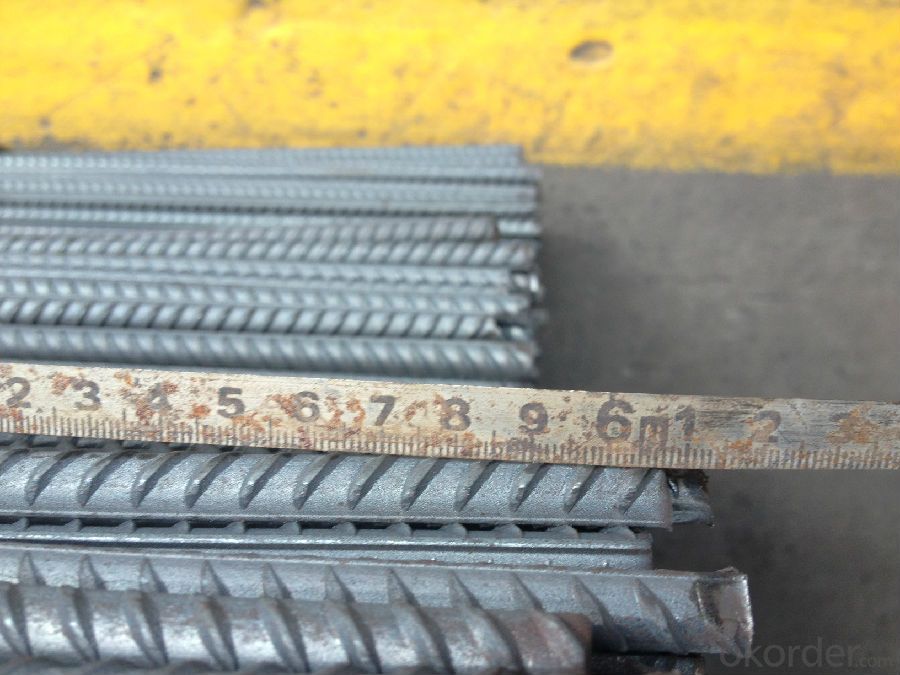
- Q: What are the precautions to be taken while welding steel rebars?
- When welding steel rebars, there are several precautions that need to be taken. First and foremost, it is crucial to wear appropriate personal protective equipment such as a welding helmet, gloves, and a protective apron to shield against sparks, heat, and UV radiation. Additionally, proper ventilation in the work area is necessary to prevent the accumulation of harmful fumes and gases. It is important to ensure that the rebar is clean and free from any contaminants or coatings that could affect the quality of the weld. Welding should only be performed by trained and qualified individuals who understand the specific techniques and settings required for welding rebars. Finally, regular inspections of the welds should be conducted to ensure their integrity and strength.
- Q: Are steel rebars suitable for use in earthquake-prone regions?
- Yes, steel rebars are suitable for use in earthquake-prone regions. Steel rebars are widely used in construction due to their high tensile strength and ductility, which allows them to absorb and distribute seismic forces during an earthquake. Additionally, steel rebars can be reinforced with epoxy coatings or corrosion-resistant materials, increasing their durability and longevity in earthquake-prone areas.
- Q: What are the different types of steel rebars used in bridge construction?
- There are several types of steel rebars commonly used in bridge construction, including carbon steel rebars, epoxy-coated rebars, galvanized rebars, and stainless steel rebars. Each type possesses unique properties and characteristics that make them suitable for specific applications in bridge construction.
- Q: How do steel rebars affect the overall noise insulation of a structure?
- Steel rebars have a minimal impact on the overall noise insulation of a structure. This is because noise insulation primarily depends on the density and thickness of the materials used in the construction of walls, floors, and ceilings. Steel rebars, being used to reinforce concrete structures, do not significantly contribute to the sound insulation properties of a building. The primary function of steel rebars is to provide strength and stability to the concrete, ensuring its structural integrity. They are typically embedded within the concrete, resulting in their presence throughout the building's framework. However, the steel rebars themselves do not possess any sound-absorbing or sound-blocking characteristics. To enhance the noise insulation of a structure, other sound insulation materials such as insulation boards, acoustic panels, or soundproofing materials need to be incorporated into the building design. These materials are specifically designed to absorb or block sound waves, reducing the transmission of noise from one area to another. While steel rebars may not directly contribute to noise insulation, they indirectly play a role in maintaining the overall structural integrity of a building. A well-constructed and sturdy structure can help minimize vibrations and sound transmission caused by external noise sources. Therefore, while steel rebars themselves do not significantly affect noise insulation, their presence indirectly contributes to a more solid and stable building, which can help reduce structural vibrations and unwanted noise.
- Q: What is the maximum length of steel rebars that can be used in construction?
- The maximum length of steel rebars that can be used in construction varies depending on the specific project and structural requirements. However, standard lengths for steel rebars typically range from 6 meters (20 feet) to 12 meters (40 feet).
- Q: How do steel rebars improve the ductility of concrete?
- Steel rebars improve the ductility of concrete in several ways. Firstly, the presence of rebars helps to distribute and dissipate stress throughout the concrete structure, preventing the concentration of loads in specific areas. This even distribution of stress helps to prevent the formation of cracks or fractures, thus enhancing the overall ductility of the concrete. Secondly, when the concrete undergoes tension or bending forces, the rebars act as reinforcement to resist these forces. The steel rebars have high tensile strength compared to concrete, which is weak in tension. This reinforcement allows the concrete to withstand higher tensile stresses without breaking, increasing its ductility. Additionally, the bond between the steel rebars and the concrete matrix plays a crucial role in improving ductility. The rough surface of the rebars provides better adhesion with the surrounding concrete, increasing the transfer of stresses between the two materials. This bond prevents the rebars from slipping out of the concrete during deformation, ensuring the structural integrity and enhancing the ductility of the composite material. Moreover, the presence of steel rebars also contributes to the post-cracking behavior of concrete. When cracks develop under high loads, the rebars help to hold the concrete together and prevent further propagation of the cracks. This post-cracking behavior allows the concrete to maintain its load-bearing capacity even in a damaged state, thereby improving its overall ductility. In summary, steel rebars improve the ductility of concrete by distributing stress, resisting tension and bending forces, enhancing the bond between concrete and rebars, and providing post-cracking reinforcement. These combined effects result in a more flexible and durable concrete structure that can withstand deformation without catastrophic failure.
- Q: How do steel rebars affect the flexibility of concrete structures?
- Steel rebars greatly enhance the flexibility of concrete structures. By adding rebars to concrete, they provide tensile strength, allowing the structure to resist cracking and withstand external forces such as wind, earthquakes, and heavy loads. This reinforcement enables the concrete to flex without breaking, increasing its overall flexibility and durability.
- Q: How do steel rebars contribute to the overall structural stability of a building?
- Steel rebars contribute to the overall structural stability of a building by providing reinforcement to concrete structures. They enhance the tensile strength of concrete, which is otherwise weak in resisting tension forces. By distributing the load and absorbing the stress, rebars prevent cracks and failure in concrete, making the building more resistant to various forces such as earthquakes, wind, and heavy loads, ensuring its overall stability and longevity.
- Q: How do steel rebars impact the overall constructability and scheduling of concrete projects?
- Steel rebars have a significant impact on the overall constructability and scheduling of concrete projects. They provide structural reinforcement to concrete, increasing its strength and durability. The inclusion of rebars in the concrete design requires careful planning and coordination, as they need to be accurately positioned and supported within the concrete forms. This process can add complexity to the construction process, potentially affecting the project's timeline. However, rebars ultimately enhance the project's constructability by ensuring the structural integrity of the concrete elements, leading to safer and more reliable structures.
- Q: What are the different methods for cutting steel rebars on-site?
- Cutting steel rebars on-site can be achieved using various methods, which depend on the specific project requirements and limitations. The following are some commonly used techniques: 1. For smaller projects or areas where power tools are inaccessible, manual cutting proves to be a suitable method. Handheld manual tools like rebar cutters or bolt cutters are utilized to cut through the steel rebars. 2. Abrasive cutting, also known as grinding or cut-off saws, employs a high-speed rotating disc with abrasive particles that grind through the steel rebars. This method is effective for cutting rebars of different sizes and is frequently employed on construction sites. 3. Torch cutting involves the use of oxy-fuel or plasma torches. The method entails heating the steel rebars to a high temperature and then cutting through them using the intense heat. Torch cutting is ideal for thicker and larger rebars, although caution and safety measures must be observed due to the open flame involved. 4. Shear cutting utilizes hydraulic or mechanical shears to cut through the steel rebars. It is an efficient method for quickly and accurately cutting rebars, particularly for larger projects. 5. Hydraulic cutting involves the use of hydraulic pumps to generate high pressure, which is then utilized to power the cutting blade. This method is commonly employed for heavy-duty cutting tasks and can easily cut through thick rebars. 6. Electric cutting is achieved using electric cutters, such as electric rebar cutters or portable band saws. These tools are powered by electricity and provide a clean and precise cut. They are commonly utilized on construction sites where power is readily available. When selecting the appropriate method for cutting steel rebars on-site, it is crucial to consider the specific project requirements, including the size and thickness of the rebars, available power sources, and safety considerations.
Send your message to us
Hot-Rolled Steel Deformed Bar Rebar Deformed Steel Bar
- Loading Port:
- Tianjin
- Payment Terms:
- TT OR LC
- Min Order Qty:
- 50 m.t.
- Supply Capability:
- 30000 m.t./month
OKorder Service Pledge
OKorder Financial Service
Similar products
Hot products
Hot Searches
Related keywords
